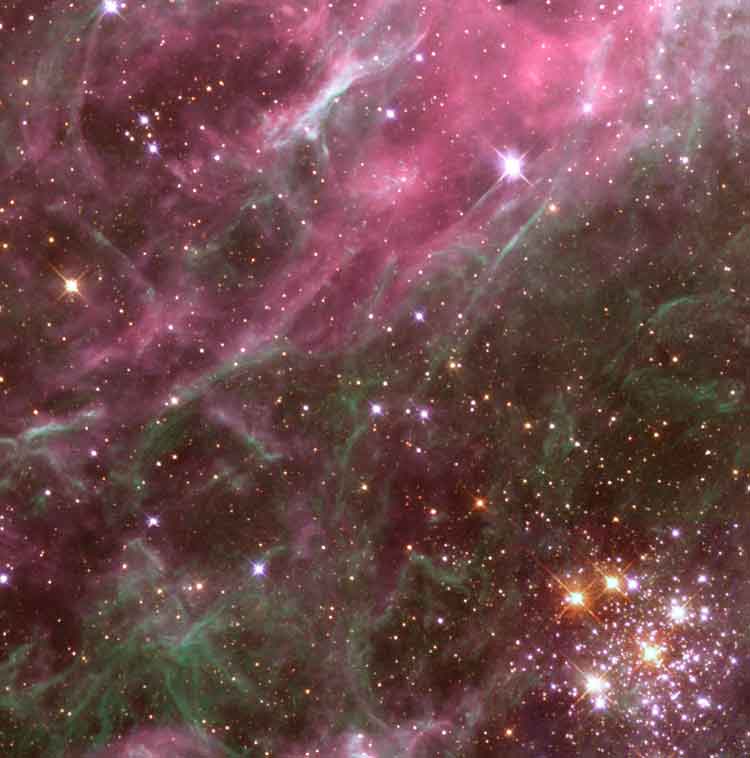Hodge 301 (lower right) in the Tarantula Nebula, NASA and The Hubble Heritage Team (STScI/AURA). Y-H. Chu (U. of Illinois), E. Grebel (U. of Washington) Hodge 301 is a star cluster in the Tarantula Nebula, visible from Earth's Southern Hemisphere. The cluster and nebula lie about 168,000 light years away, in one of our Milky Way Galaxy's orbiting satellite galaxies, the Large Magellanic Cloud. Hodge 301, along with the cluster R136a, is one of two major star clusters situated in the Tarantula Nebula, a region which has seen intense bursts of star formation over the last few tens of millions of years. R136a is situated in the central regions of the nebula, while Hodge 301 is located about 150 light years away, to the north west as seen from Earth. The cluster was formed early on in the current wave of star formation, with an age estimated at 20-25 million years old, some 10 times older than R136a [1]. Since the cluster formed, it is estimated that at least 40 stars within it have exploded as supernovae, giving rise to violent gas motions within the surrounding nebula and emission of x-rays. This contrasts with the situation around R136a, which is young enough that none of its stars have yet exploded as supernovae; instead, the stars of R136a are emitting fast stellar winds, which are colliding with the surrounding gases. The two clusters thus provide astronomers with a direct comparison between the impact of supernova explosions and stellar winds on surrounding gases.[2] References 1. Grebel E.K., Chu Y-H. (2000). Hubble Space Telescope Photometry of Hodge 301: An "Old" Star Cluster in 30 Doradus, Astronomical Journal, v.119, p.787 2. Chu Y-H., Grebel E.K., Bomans D.J., Smith R.C., & Yang H. (1996), The Violent Interstellar Medium in the Giant HII Region 30 Doradus, Astron. Gesellschaft Abstract Series, v.12, p.207 Links
Retrieved from "http://en.wikipedia.org/"

|
|
||||||||||||
